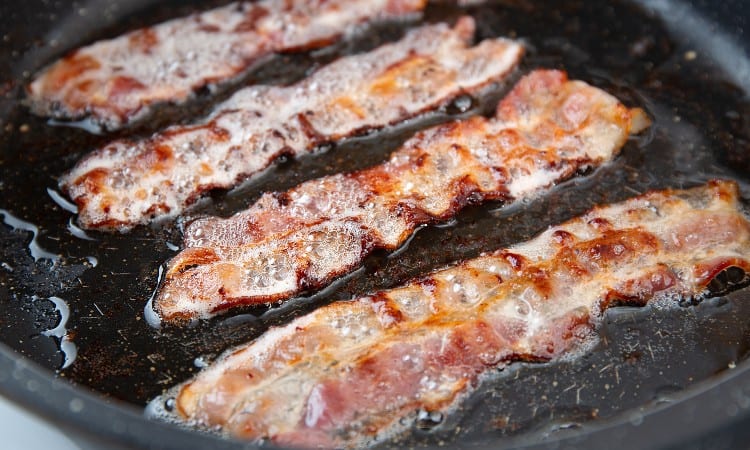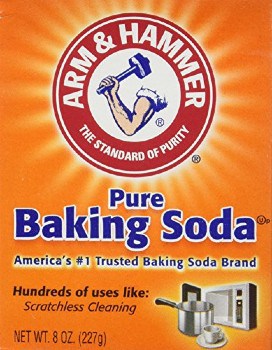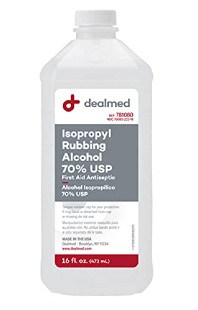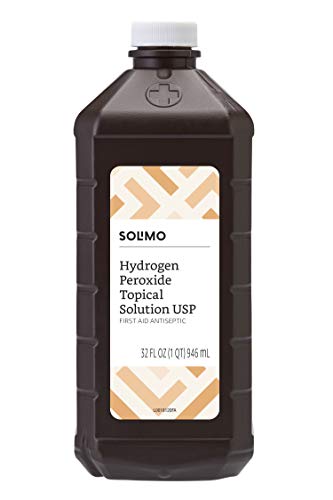Bacon is a classic addition to morning meals all around the world. But bacon can be very frustrating to make since bacon grease tends to splatter all over your clothes as you prepare it. If this has ever happened to you, you’ve probably wondered how to get bacon grease out of clothes without causing further staining.
Bacon grease is incredibly oily and repels water during the washing process. To remove bacon grease from your clothes, you need to absorb or break down this oil. Applying simple household products like dish soap, baking soda, cornstarch, or vinegar are a few ways to accomplish this.
This article will cover these methods and more for tackling these tough, oily stains. You’ll want to be sure to catch our list of things to avoid while getting bacon grease out of your clothes to avoid causing any further damage. Follow these tips and your clothes will be grease-free in no time!

Quick Navigation
- Does Bacon Grease Stain Clothes?
- Will Bacon Grease Wash Out of Clothes?
- How To Get Bacon Grease Out of Clothes: 7 Methods
- Things to Avoid When Getting Bacon Grease Out of Clothes
- How Do You Get Dried Grease Stains Out of Clothes?
- Can You Remove a Grease Stain After Drying?
- What is the Best Way to Remove Bacon Grease From Clothes?
Does Bacon Grease Stain Clothes?
Bacon grease is an oily substance that quickly absorbs and clings to clothing fibers when it splatters out of your skillet. These oil droplets will quickly leave large, dark splotches on your clothes that can become permanent stains if not treated quickly. In a sense, those areas of your clothes permanently look wet and dark because they are coated in a layer of oil.
If you give them a chance, bacon grease stains will stay permanently on your clothes. The longer you wait to treat them, the harder they will be to remove. You’ll want to act quickly to tackle them and reduce the chances of staining your clothes forever.
Will Bacon Grease Wash Out of Clothes?
The fortunate news is that if you move fast, you can wash bacon grease out of your clothes. A quick response is important because these stains can become permanent if they are allowed to sit for too long or are dried into the fabric. Ideally, you should treat the stain immediately if you can.
In addition to acting quickly, you also need to use the right products to wash bacon grease out of your clothing. Because bacon grease is so oily, you need a product that can either absorb it out of the fabric or can break down the oil to allow water to wash it away. Ordinary laundry soaps alone aren’t always able to do this, meaning you need to break out tougher cleaning options to wash out these stains.
If this makes you nervous, don’t fret! These stains are very easy to treat if you tackle them correctly.
How To Get Bacon Grease Out of Clothes: 7 Methods
The great thing about washing bacon grease out of your clothing is that many of the best stain fighters are common household products you probably have on hand already. Liquid dish soap, baking soda, chalk, cornstarch, rubbing alcohol, vinegar, and hydrogen peroxide are easily found at your local grocery store and are generally inexpensive to buy.
Before you jump right into using one of these methods, however, take a moment to see if you can get some grease off the fabric so there’s less for the cleaners to break down. If a large glob of grease has landed on your clothes, use the back of a butter knife or spoon to gently scrape it off without spreading it. You should also blot the stain with a clean, damp rag to try and lift away the grease before you begin.
1. Liquid Dish Soap
 Liquid dish soap is one of the best tools to use to get grease of any kind out of your clothing. That’s because dish soap is typically formulated to break down food grease on your dishes. It makes sense, then, that this same product can break down grease on your clothes.
Liquid dish soap is one of the best tools to use to get grease of any kind out of your clothing. That’s because dish soap is typically formulated to break down food grease on your dishes. It makes sense, then, that this same product can break down grease on your clothes.
All you need to do is gently rub a couple of drops of liquid dish soap into the stain and allow it to sit for 5 minutes. If the grease has soaked completely through the fabric, apply the soap on the back of the stain. Then, wash the fabric in your washing machine using regular laundry soap and as hot water as the fabric can safely stand.
Don’t skimp out on the quality of your soap. Use a good product that cleans well while being gentle – like the original blue Dawn dish soap. Avoid using any soaps with added ingredients like bleach or peroxide since these could lighten your fabrics.
2. Baking Soda
 If the grease spot is very fresh and still slightly wet, there are a few powdery household products that you can use to absorb the oil out of the fabric. Baking soda is one of these products. Simply sprinkle the baking soda onto the fresh grease spot and allow it to sit and absorb the oil.
If the grease spot is very fresh and still slightly wet, there are a few powdery household products that you can use to absorb the oil out of the fabric. Baking soda is one of these products. Simply sprinkle the baking soda onto the fresh grease spot and allow it to sit and absorb the oil.
You can repeat this process multiple times until the stain has lifted or the baking soda has stopped absorbing the oil. Gently brush off any excess baking soda before washing the clothing if the fabric can handle it. As a bonus, baking soda will help to remove any smells that could have soaked into your fabric from the bacon grease.
Baking soda is particularly useful on delicate fabrics that can’t handle being fully submerged in water for a long time. It is safe to use on furs, leathers, silk, wool, and other fabrics that can be challenging to clean. Simply brush off the baking soda once the stain has been lifted and wipe the fabrics off with vinegar if they can safely handle it.
3. Chalk
 Your favorite sidewalk chalk is good for more than just coloring outside! You can use ordinary chalk to absorb fresh oil stains if you don’t have baking soda on hand. Simply crush the chalk until it is a fine powder, then apply it directly to the grease to sit for at least 5 minutes.
Your favorite sidewalk chalk is good for more than just coloring outside! You can use ordinary chalk to absorb fresh oil stains if you don’t have baking soda on hand. Simply crush the chalk until it is a fine powder, then apply it directly to the grease to sit for at least 5 minutes.
The chalk will absorb the oil, allowing you to brush it away from the fabric. Like baking soda, you can repeat this process multiple times until all the oil has been lifted out of the fabric. This method can also be used on delicate fabrics that can’t handle a regular wash cycle.
I recommend sticking to white chalk to avoid accidentally staining your fabrics with the pigments added to the other colors. You should also try to use new sticks of chalk that haven’t been used outside. Previously used chalk sticks could accidentally rub dirt or other debris into your fabrics.
4. Cornstarch
 Cornstarch is another example of a powder that can be used to absorb oil out of your clothes, especially delicate ones. As with baking soda and chalk, simply dust the stain in the cornstarch and allow it to sit for several minutes to absorb any fresh oil. Repeat this process multiple times if you need to until the oil is completely absorbed.
Cornstarch is another example of a powder that can be used to absorb oil out of your clothes, especially delicate ones. As with baking soda and chalk, simply dust the stain in the cornstarch and allow it to sit for several minutes to absorb any fresh oil. Repeat this process multiple times if you need to until the oil is completely absorbed.
It is important when using corn starch that you brush as much of it off of your clothes as you can if you are going to wash them. Cornstarch will thicken when it hits any water and can create a paste in the bottom of your washing machine if too much has ended up in your load. This would require a lot of cornstarch but is still worth noting so that you can take steps to protect your washing machine.
5. Rubbing Alcohol
 While baking soda, chalk, and cornstarch work well on fresh grease stains, it’s not always possible to tackle these spots right after they happen. If that is the case, you’ll need a liquid cleaner that can cut through the grease to let the water lift it away. Rubbing alcohol is great at doing just that.
While baking soda, chalk, and cornstarch work well on fresh grease stains, it’s not always possible to tackle these spots right after they happen. If that is the case, you’ll need a liquid cleaner that can cut through the grease to let the water lift it away. Rubbing alcohol is great at doing just that.
To use rubbing alcohol, all you need to do is carefully bot the spot with the alcohol. Let it soak into the stain fully, but try not to rub it too much, or else you could spread the stain. Let the rubbing alcohol sit for around 5 minutes before washing the clothes as you normally would.
6. Vinegar
 Vinegar is also useful for cutting through oil stains that would otherwise repel water. You’ll want to be sure to use white vinegar since many other types have natural colors that could stain your fabrics. Simply dab the grease spot with the vinegar until it has fully soaked through the stain.
Vinegar is also useful for cutting through oil stains that would otherwise repel water. You’ll want to be sure to use white vinegar since many other types have natural colors that could stain your fabrics. Simply dab the grease spot with the vinegar until it has fully soaked through the stain.
Let the vinegar sit on the stain for at least 5 minutes before washing your clothes as you normally would. You can repeat this process multiple times if needed as long as you haven’t dried your clothes with heat. Heat will set in the stains, making them almost impossible to remove.
7. Hydrogen Peroxide
 As a final method, everyday hydrogen peroxide can also be used to break down tough oil residues. It works best if you mix equal parts of peroxide and dish soap. This mixture can be applied directly to the stain and allowed to sit for up to 15 minutes.
As a final method, everyday hydrogen peroxide can also be used to break down tough oil residues. It works best if you mix equal parts of peroxide and dish soap. This mixture can be applied directly to the stain and allowed to sit for up to 15 minutes.
Once the peroxide has set in, you then need to wash the fabric in your washing machine on a regular cycle. The peroxide should have broken down the oil enough that the water and your regular laundry soap can lift it away completely.
One warning about hydrogen peroxide is that it can lighten your clothing in large amounts. You’ll want to apply only a small amount of this mixture directly to the stain, avoiding the fabrics around it. If you’re worried about color lightening, apply a bit of the mixture to a hidden spot on the fabric to see how it reacts before using it on the stain itself.
Things to Avoid When Getting Bacon Grease Out of Clothes
While getting bacon grease on your clothing is very annoying, the upside is that the stains are pretty easy to clean if you tackle them immediately. There are only a few things you’ll want to avoid when dealing with your greasy spots to help stop any further damage to your clothes.
Rubbing the Stain
One of the worst things you can do to a grease spot is to rub it in. Rubbing the stain can cause it to push deeper into the fabric, making it coat more of the fibers than it originally would have. It can also make the spot larger since the soil will spread outward as you rub the stain.
If either of these things happens, the stain will be a lot harder to remove. Your best bet is to carefully blot the stain with a clean, damp towel when it first happens. This will help to lift some of the oil without driving it in deeper or spreading it outward.
Cold Water
If you can, try using warm or hot water on your grease stains. The warmer the temperature of the water, the more the oil will break down when it comes into contact with it. Cold temperatures can solidify the oil, making it harder to remove.
You should always base your temperature, however, on the fabric, you are washing. Be sure to pay attention to the care instructions on your clothing tags, which will tell you what temperature water the fabric can be washed with. Try to wash your grease-stained clothes with the warmest temperature of water your fabrics can safely handle.
Drying the Clothes (with Heat)
A huge mistake many people make when trying to get grease out of their clothes is immediately throwing them in the dryer after finishing washing. If the oil stain hasn’t been completely lifted from the cloth, the dryer’s heat will cause it to burn further. Once the stains have been dried with heat, they can be almost impossible to remove since the stain has essentially been baked into the fabric.
You should always check each piece of clothing completely to ensure no grease stains have stuck around before you dry them in your dryer. If the grease spots are still visible, wash the fabric again using one of the methods we discussed above.
Air dry the fabric after the first wash cycle if needed. This will help prevent the stain from fully setting in and allow you to wash the clothing again.
How Do You Get Dried Grease Stains Out of Clothes?
Dried grease stains are much more difficult to remove than fresh stains. If the stain has been dried in a dryer using heat, it’ll be even more challenging to get rid of since this can set the stain in further. Your best bet is to do everything possible to stop the stains from drying before they’re treated.
If the stains dry, you can try a few methods to fix the problem. You’ll want to choose one liquid household goods discussed above to lift these spots. Dry powders won’t cut it.
I find dish soap is the best at lifting even the toughest of dried grease stains. Apply a generous dollop of dish soap to the dried stain and allow it to sit for at least 5 minutes before running the clothes through your washing machine. You can do this multiple times, as long as you don’t dry your clothes with the heat between washes.
Can You Remove a Grease Stain After Drying?
You can, but the results may not be as good as if you treated the stain while it was fresh. Dried-in stains can sometimes set into the fibers and be difficult to lift. Even then, you may still see a slight dark spot where the grease once was.
Liquid dish soap works extremely well for lifting these stains. You might need to leave the soap on for a long time or do multiple treatments. You can allow the dish soap to soak for 1-2 hours to give it time to break down that dried-up oil.
Remember that this isn’t the ideal way to treat stains from bacon grease. You should always try to tackle them when they’re fresh to give you better odds of success. Some dried grease stains will never fully leave your fabrics.
What is the Best Way to Remove Bacon Grease From Clothes?
With all of the methods we discussed in this article, you might be wondering what our top pick is for how to tackle tough grease stains. There are two answers I’ll give to this, depending on whether or not the fabrics can be washed.
The best way to remove bacon grease is to use a quality liquid dish soap. Liquid dish soaps are the best way to break down the oils in the grease since that is quite literally what they are designed to do on your dishes. Even better, they’re gentle on your clothes.
But, not all fabrics can be washed in your washing machine with lots of water. For these fabrics, the best choice is simply baking soda. However, remember that baking soda is only useful on fresh stains that are still a bit wet.
Regardless of which method you choose, we’re confident that any of them are excellent ways to remove bacon grease from your clothing. I recommend starting with our top picks, but feel free to move on to the others as needed!